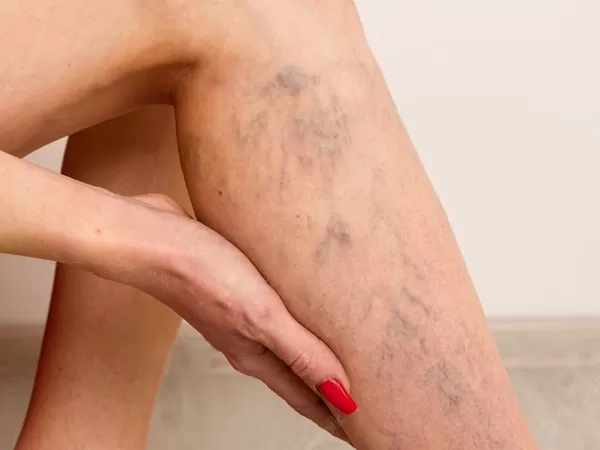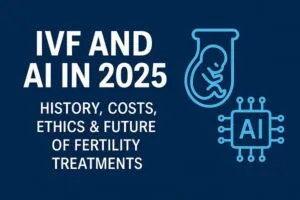Discover How To Naturally Get Rid Of Varicose Veins In Just A Few Weeks!

A varicose vein is a swollen, twisted vein on the legs. They are often red or blue. It occurs when your veins have problems sending blood from your legs up to your heart. Women are more likely to suffer from them than men. Most commonly, they develop in the legs, but they can also appear elsewhere.
Quick fact:Varicose veins are common and affect up to 3 out of 10 adults. They are more common in women than in men and tend to run in families.
Varicose veins occur when the valves in your veins do not work well and allow blood to flow backward and pool in your veins. If you have this disorder, you may notice aching, heavy legs, burning and throbbing in your legs, swollen ankles, and itching around one or more of your veins. Your veins may also look twisted, bulging, or enlarged. If untreated, it can cause blood clots in the vein (superficial thrombophlebitis), inflammation of the skin over the vein (stasis dermatitis), and ulcers of the skin.
The causes of varicose veins vary depending on the age of the individual. In children, they are commonly due to poor circulation. As people get older, the condition becomes more prevalent. Other factors include pregnancy, obesity, genetics, and certain medical conditions.
Spider veins: what are they?
Spider veins are not common but can be a nuisance when they form in the legs. They are caused by dilatation of the veins, a condition that can be worsened by obesity, pregnancy, or prolonged standing or walking. While they may seem like a minor issue, spider veins can lead to an increased risk of blood clotting and other complications. Spider veins are a common problem. However, there are no risks or complications associated with them.
How you can identify if you have varicose veins?
There are a few ways that a physician may diagnose varicose veins. Physical examinations are the most common method. Other methods include measuring the vein diameter and assessing for abnormalities in the skin, such as spider veins. Some people may experience pain or swelling in their legs when they have it.
Varicose veins Symptoms: what are they?

Varicose Veins are swollen, thickened varices of the leg vein, usually caused by prolonged standing, sitting, or walking with legs crossed. They are often associated with pregnancy or obesity. You may not even realize that they are present until they start to appear. They are often unsightly and painful. If left untreated, they may lead to skin ulceration, infection, inflammation, bleeding, and evencellulitis(skin abscess).
The following are the symptoms:
- Aching pain in the affected area
- Swelling of the affected limb
- Discoloration of the affected limb
A person suffering from varicose veins might experience the following conditions:
- Numbness
- Tiredness
- Painful cramps
- Weakness
- Difficulty in maintaining balance
- Leg swelling
- Skin lesions
Varicose veins Treatment: what are they?

Varicose veins treatment is used to relieve symptoms and improve the appearance of the affected area. Treatment may also reduce the risk of complications such as ulcers. There are several treatment options available, and the best option for you will depend on the severity of your condition and your symptoms. Treatment options include self-care measures, such as wearing compression stockings; minimally invasive procedures, such as sclerotherapy; and surgery.
- Surgical treatment: for varicose veins is common. A venous ligation and stripping procedure is one of the most common types of surgery. This is where the surgeon ties off the vein above and below the varicose vein, and then removes the varicose vein. This type of surgery is usually done under general anesthetic, which means you will be asleep during the operation. The treatment, such as sclerotherapy and surgery, can help to improve the appearance of the legs and reduce the risk of complications.
- Varicose veins are commonly caused by a combination of heredity and lifestyle. However, there are several treatments available that can help to reduce the pain and discomfort associated with this condition.Sclerotherapyis one of the most common treatments for it. This involves injecting a solution into the veins, which causes them to collapse and fade away.
- Elevation:Your legs should be elevated several times throughout the day to increase blood flow and decrease vein pressure.
- Elastic stockings:Wearing supportive socks or stockings reduces discomfort caused by varicose veins. Your veins are prevented from stretching by the compression, which allows blood to flow more freely.
- Laser therapy:By using a catheter (a long, thin tube) and laser, healthcare providers can close off damaged veins in a minimally invasive procedure called endovenous thermal ablation.
- Vein surgery:In these cases, also known as ligation and stripping, the surgeon ties off your affected vein to prevent blood from pooling. To prevent varicose veins from appearing again, the surgeon may remove (strip) the vein.
Are there any risks or complications?

Although varicose veins are usually harmless, they can sometimes lead to more serious problems. In rare cases, they can cause blood clots to form in your legs. These blood clots can cause pain, swelling, and redness in your leg. They are a common condition that affects about one in every five adults, according to theU.S. National Library of Medicine. The condition occurs when blood vessels become enlarged and twisted. They usually occur in the legs and can cause pain, swelling, and other symptoms.
What are the chances of getting varicose veins during pregnancy?
You have more blood pumping through your body during pregnancy to support your unborn baby. Having too much blood in your body can increase the size of your veins. Veins are also under pressure when your uterus grows (womb). In the buttocks and around the vagina, varicose veins may develop. After childbirth, varicose veins shrink or disappear for some women. Some women suffer from varicose veins after childbirth, and symptoms continue to worsen. Each pregnancy may also increase the number of varicose veins and spider veins in women.
Preventions for Varicose Veins?
Prevention starts with knowing what causes varicose veins. Furthermore, diabetes, high cholesterol, and heart disease can also contribute to poor circulation. One way to prevent it is to maintain good circulation by exercising regularly. Exercise increases the flow of blood to the muscles and skin, which helps to prevent varicose vein formation. Avoiding cigarettes, which decreases circulation, is also helpful. As well as avoiding the listed habits, there are several things you can do to help prevent varicose veins.
Are there any home remedies for treating varicose veins?

You can improve the flow of blood in your legs if you suffer from it or spider veins at home or work.
- Maintain a regular physical activity schedule. Gravity pushes blood back toward the heart through leg muscles. Performing exercises that work the muscles in your legs can help prevent new varicose veins or spider veins from developing.
- Being overweight or obesity can be treated by losing weight.Having extra weight makes it harder for your veins to return blood to your heart against gravity. The loss of weight may help prevent the development of new varicose veins or spider veins.
- Avoid sitting or standing for long periods.Every 30 minutes, take a break and stand up and walk around if you have to sit or stand for a long time at work or home. The muscles in your legs move blood back up to your heart more quickly when you are moving around rather than sitting or standing still.
- Make sure you wear compression stockings.Your legs will receive more blood flow with compression stockings.
- Lie back and relax.You should rest your feet on a stool as much as possible when sitting to promote blood flow in your legs.
The bottom line,
Varicose veins are often painful and can cause a range of problems, from discomfort in the legs to varicose ulcers, which can be life-threatening. Treatment options for this disorder have come a long way in recent years, and there are now many ways to get rid of it or reduce its appearance. Stay healthy!
Frequently Asked Questions
How to Get Rid of Varicose Veins on Legs?
Treatment options for varicose veins in the legs include lifestyle changes, wearing compression stockings, and medical procedures such as sclerotherapy and laser therapy.
What is Varicose Veins in Legs?
Varicose veins in the legs are enlarged, twisted veins that often appear blue or dark purple and may protrude above the surface of the skin.
What is the Varicose Veins Problem?
Varicose veins are a problem when the valves in your veins become weak or fail, allowing blood to pool and cause the veins to enlarge and twist.
How to Get Rid of Spider Veins Naturally?
Natural treatments for spider veins include maintaining a healthy weight, exercising regularly, wearing compression socks, and elevating your legs.
What Causes Veins to Become More Visible in a Child?
The appearance of veins in children may be due to increased blood flow, rapid growth, or genetic factors. However, it is important to consult a doctor for an accurate diagnosis.
How Do Varicose Veins Look Like?
Varicose veins usually appear as bulging, twisted veins in the legs, often accompanied by symptoms such as swelling, pain, and itching.





